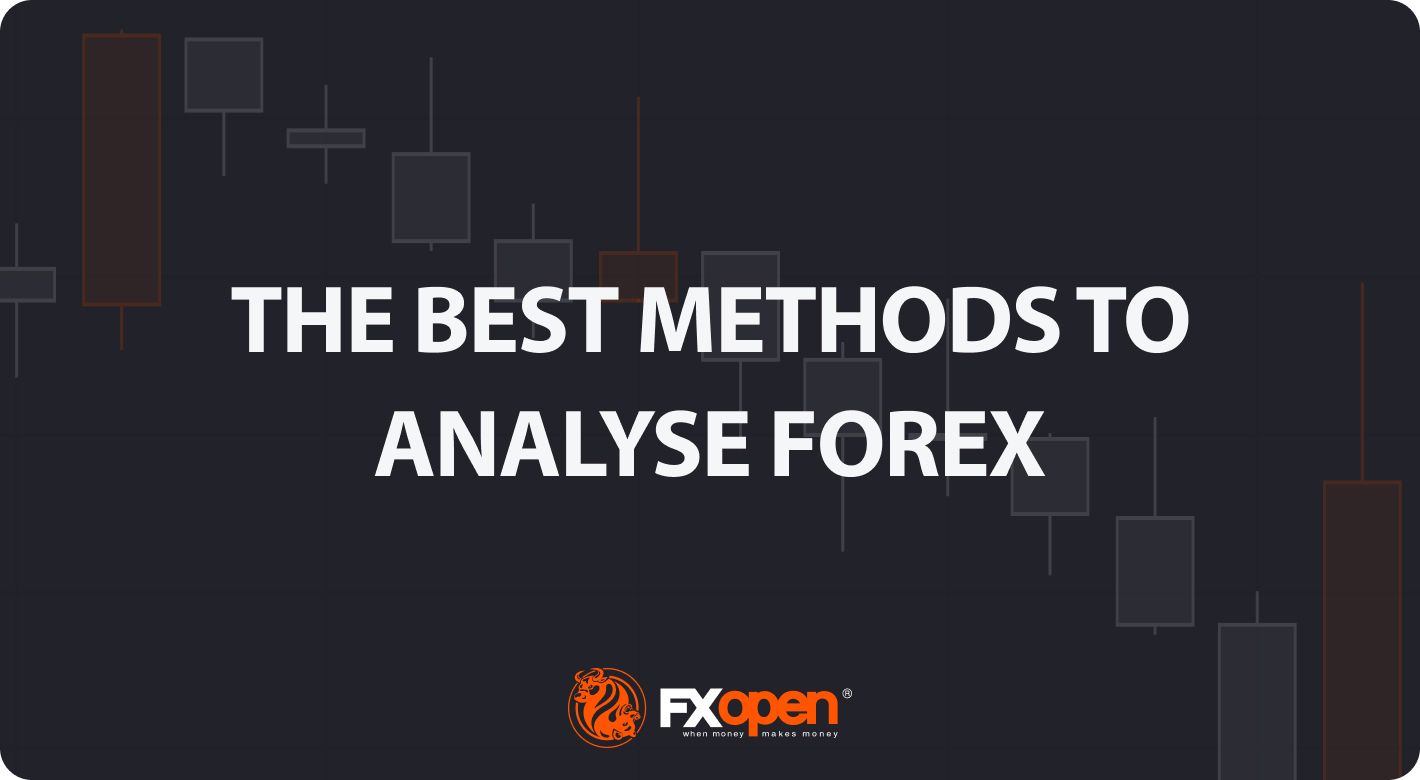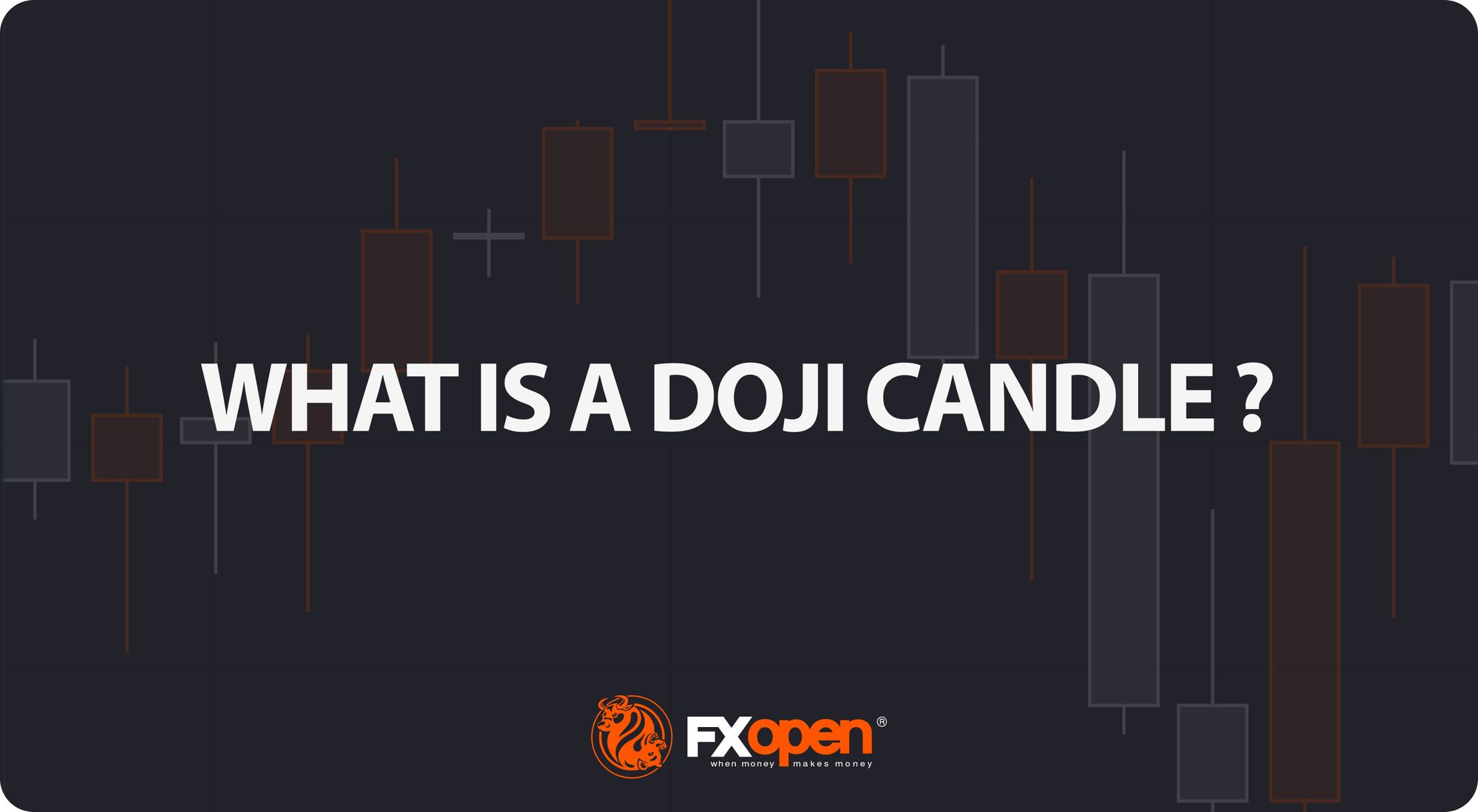FXOpen

The foreign exchange (forex) market is the largest and most liquid financial market globally, with trillions of dollars traded every day. Understanding how to analyse the forex market is essential for traders to make informed trading decisions and manage risk effectively. Several methods are available, each offering a unique perspective on price movements. Here, we will explore some of the best analysis methods for forex traders and describe how they can be implemented in day-to-day trading activities.
Forex Trading and Fundamental Analysis
Fundamental analysis is a method of analysing financial markets by evaluating the underlying factors that influence the value of an asset. It involves considering economic, financial, and other qualitative factors to determine intrinsic value.
Traders can conduct a fundamental analysis of the market using the following methods:
Economic Indicators
Fundamental analysis involves studying economic indicators such as GDP growth, inflation, interest rates, employment data, and consumer sentiment. These indicators provide insights into the economy's overall health and can help determine the potential future direction of the domestic currency.
Central Bank Policies
Traders pay attention to central bank monetary policy decisions and statements, as they can impact interest rates and the value of currencies in the global market.
Political Stability
Political events, elections, and government stability can impact market prices. Currencies of stable governments with favourable policies tend to attract traders and investors and support a stronger market.
Fundamental analysis requires in-depth research, critical thinking, and the ability to interpret data. Traders often combine fundamental analysis with other forms, such as technical analysis, to make well-informed trading decisions.
Forex Trading Technical Analysis
Currency trading with technical analysis is an equally invaluable approach. Technical analysis helps traders make trading decisions based on the study of past market data. It involves analysing charts and applying statistical tools to identify patterns, trends, and price levels that may indicate future price movements. Technical analysis of the currency market complements fundamental analysis by providing traders with a more detailed understanding of market dynamics and price movements.
The popular technical analysis methods include:
Price Charts
Price charts are the foundation of technical analysis. They display historical price data in various formats, such as lines, bars, and candlesticks. Traders use them to identify patterns and trends.
Technical Indicators
These are mathematical calculations applied to price data to provide additional insights into market conditions. Popular technical indicators include the Relative Strength Index (RSI), Moving Averages (e.g., Simple Moving Average and Exponential Moving Average), and the Moving Average Convergence Divergence (MACD).
Candlestick Patterns
Candlestick charts provide information about price action within a specific time frame. Certain candlestick patterns, such as doji, hammer, and engulfing formations, are used to predict price reversals or continuations.
You can carry out forex market technical analysis on FXOpen’s free TickTrader platform.
Sentiment Analysis
Sentiment plays a crucial role in forex trading as it helps traders gauge the overall market sentiment and determine the psychology of market participants. It involves analysing traders' collective emotions, opinions, and perceptions towards a particular currency or the forex market as a whole.
The key aspects of sentiment analysis are:
Market Sentiment Indicators
Traders often use sentiment indicators, which include sentiment indexes, sentiment ratios, or sentiment scores. They are typically calculated based on the number of bullish and bearish positions or comments.
News and Social Media Monitoring
Traders monitor news articles, economic announcements, and social media platforms to gather information about prevailing opinions and sentiments. Positive news or sentiment could increase currency demand and lead to its appreciation, and vice versa.
Intermarket Analysis
Intermarket analysis is used in forex trading to examine and analyse the relationships between different financial markets, such as stocks, bonds, commodities, and currencies. It helps traders gain insight into how various markets interact and influence each other, which can aid in understanding the potential direction of forex markets.
Popular methods deployed in intermarket analysis include:
Correlation Analysis
Correlation analysis measures the statistical relationship between two or more asset classes or markets. A positive correlation suggests that the two markets tend to move in the same direction, while a negative correlation implies they move in opposite directions. Traders use correlations to identify potential trading opportunities or hedge risks.
Relative Strength Analysis
This method involves comparing the relative performance of one asset class or market to another. Traders look for opportunities where one asset is outperforming or underperforming compared to another, then make decisions from the insight obtained.
Intermarket Ratios
Certain ratios can be constructed to gauge the relative strength or weakness of one asset class compared to another. For example, the gold-to-oil ratio compares the performance of gold prices to crude oil prices.
Algorithmic Trading Analysis
Algorithmic forex analysis and trading involves using computer programs and algorithms to execute trading strategies. Various aspects of the trading process are automated, including market analysis, order placement, and trade execution. Algorithmic trading has become increasingly popular in financial markets, including the forex market, due to its ability to execute trades quickly, precisely, and efficiently.
Here are the key elements of algorithmic trading:
Machine Vision
Some advanced systems use computer vision and image recognition techniques to analyse forex charts, order book heatmaps, trade flow charts or visualisations, interpret news articles and social media posts, and much more.
Algorithmic Execution
This approach focuses on optimising trade execution to minimise slippage and transaction costs.
Machine Learning and AI
Machine learning and artificial intelligence techniques can be used to develop predictive models for forex trading.
Demo Trading and Practice
Demo trading is valuable for analysing the forex market. It allows traders to gain practical experience, test strategies, and assess market conditions without risking real money.
With the demo account, traders can:
- Practise placing different order types to develop an understanding of how to open and close positions.
- Utilise the charting tools available on the demo platform to analyse price movements and assess market trends and potential entry/exit points.
- Practise risk management techniques – determine risk tolerance, set stop-loss and take-profit levels, and experiment with position sizing.
Final Thoughts
The forex market offers a wealth of opportunities for traders, but success hinges on making well-informed decisions. To achieve this, employing a combination of analysis methods is key. To embark on your forex trading journey and put these methods into practice, you can open an FXOpen account and start exploring the dynamic world of global trading.
This article represents the opinion of the Companies operating under the FXOpen brand only. It is not to be construed as an offer, solicitation, or recommendation with respect to products and services provided by the Companies operating under the FXOpen brand, nor is it to be considered financial advice.
Stay ahead of the market!
Subscribe now to our mailing list and receive the latest market news and insights delivered directly to your inbox.








